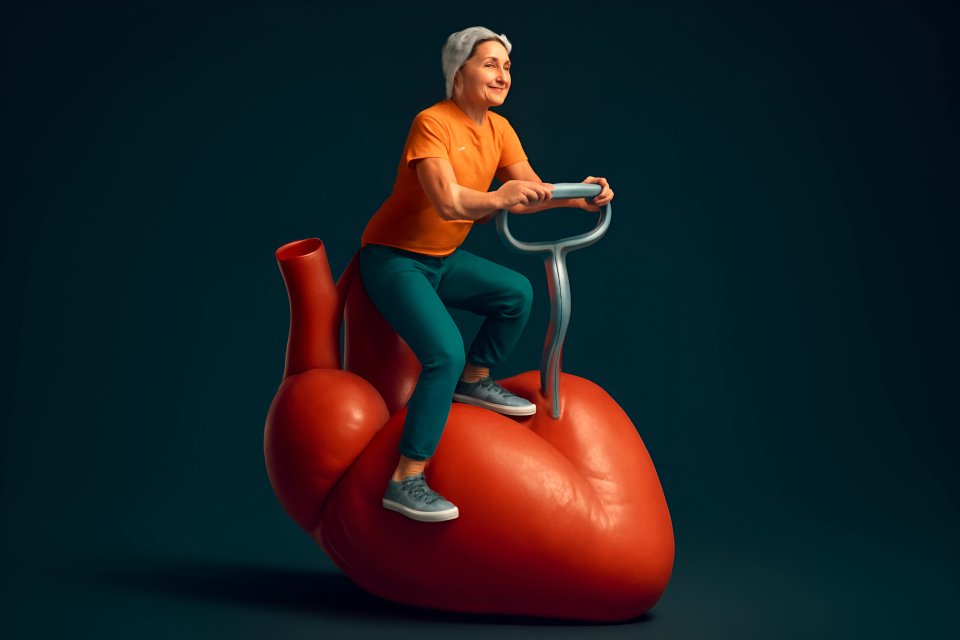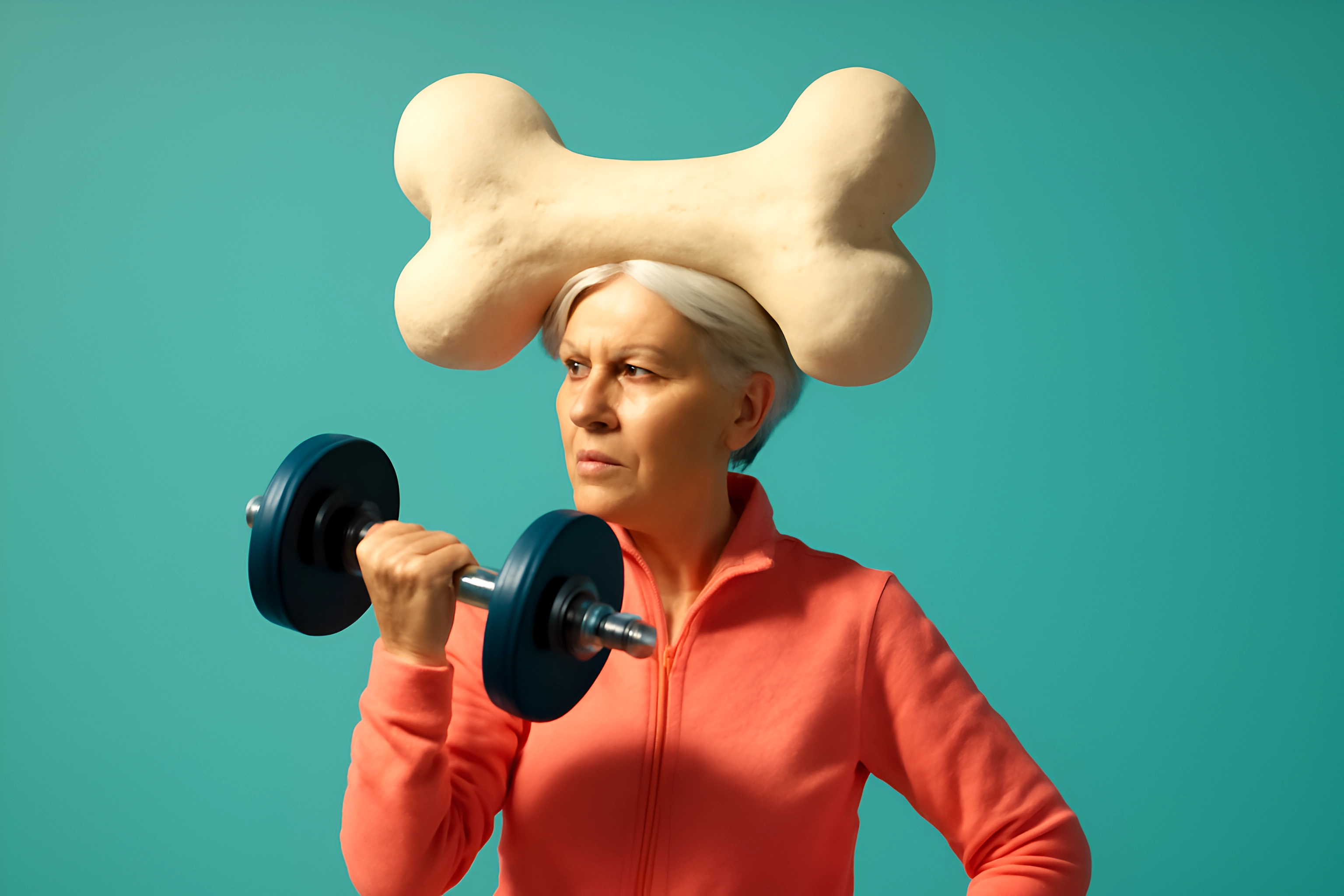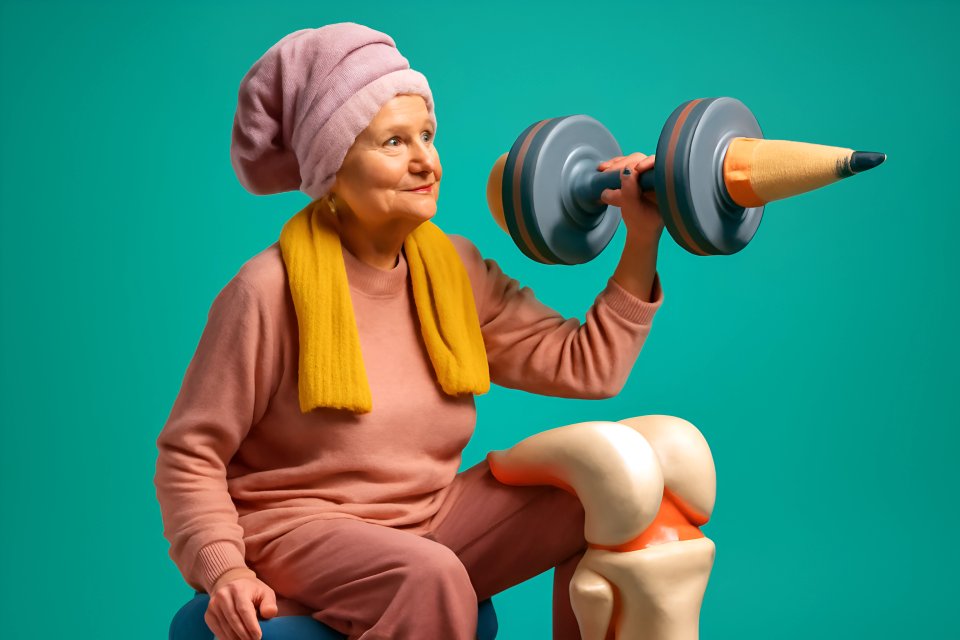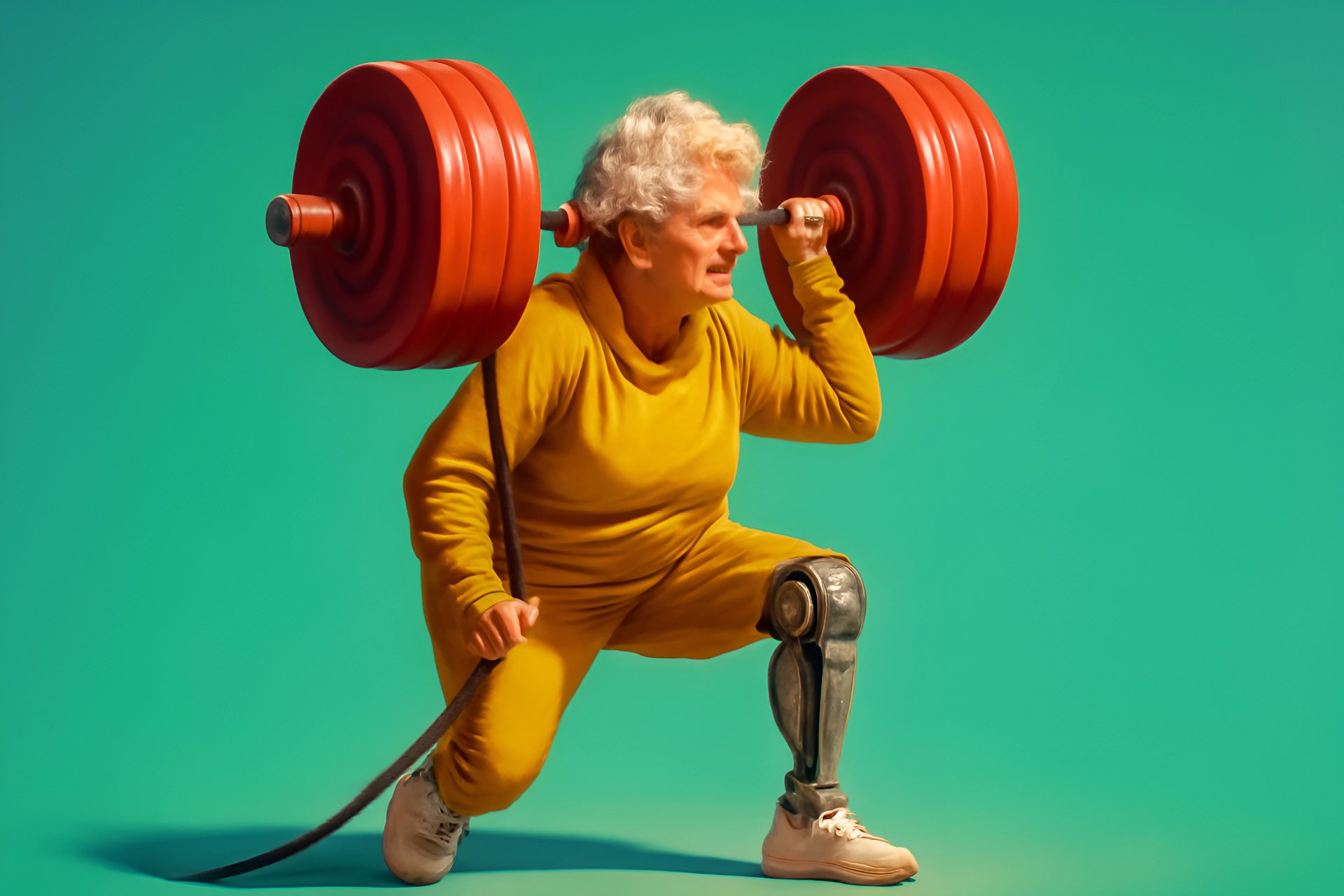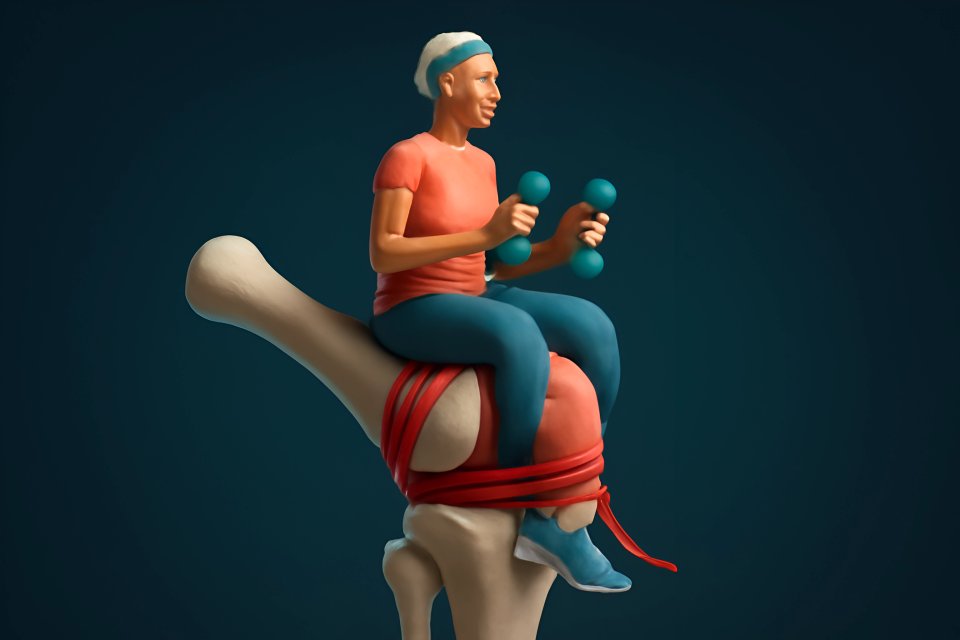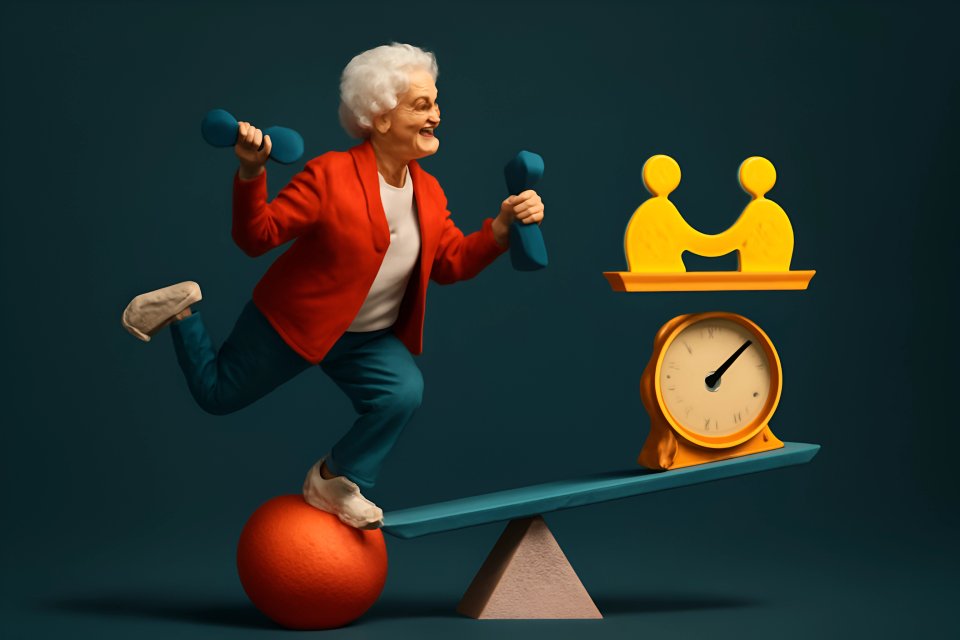
Why a Holistic Approach is a Game-Changer for Pain Management After 50
Let's be honest. The word holistic can sound a bit vague, but in this context, it means something incredibly simple and powerful. It means we stop chasing symptoms and start treating the entire system—your body—as one. Instead of just trying to silence a painful knee, we focus on creating an internal environment where that knee has a chance to heal and thrive.
For many, chronic pain creates a devastating vicious cycle. The pain makes you want to move less, which leads to inactivity. Inactivity causes your muscles to weaken and your joints to stiffen, which, you guessed it, leads to even more pain and a lower quality of life.
But here’s the game-changing truth: a holistic approach flips that script entirely. It creates a new, virtuous cycle that builds on itself. When you fuel your body with anti-inflammatory foods, you reduce the baseline level of pain. With less pain, gentle movement becomes more accessible, and as you move, you build strength, release natural painkillers called endorphins, and improve your mood. This is the core of effective nutrition and exercise for chronic pain relief—a synergistic effect that builds momentum toward a more active, comfortable life.
The Nutrition Pillar: Fighting Pain from Your Plate
Think of inflammation as a fire inside your body. While some inflammation is a normal, healthy response to injury, chronic inflammation is like a low-grade fire that never goes out, constantly irritating tissues and contributing to pain. The food you eat can either fan those flames or douse them with powerful, natural anti-inflammatories.
The goal is to adopt an anti-inflammatory diet for pain, which is less about restriction and more about adding vibrant, healing foods to your plate. According to research from Harvard Health, a diet rich in whole foods can be a powerful tool against chronic diseases fueled by inflammation. This isn't about a fad diet; it's about a sustainable lifestyle shift that nourishes your body from the inside out.
Making smart food choices is a cornerstone of natural pain management for older adults. As one study published by the National Institutes of Health notes, nutrition is a modifiable lifestyle factor that significantly impacts chronic pain conditions. You have the power to choose foods that build you up, not break you down.
Power Foods: Your Anti-Inflammatory Grocery List
Ready to build your arsenal against inflammation? Stocking your kitchen with these powerhouse foods is your first line of defense. Each one contains specific compounds that work to cool inflammation and support your body's natural healing processes.
| Food Group | Examples | Why It Works |
|---|---|---|
| Omega-3 Fatty Acids | Salmon, mackerel, walnuts, chia seeds | Directly reduces inflammatory compounds in the body. |
| Berries & Cherries | Blueberries, strawberries, tart cherries | Rich in antioxidants called anthocyanins that fight oxidative stress. |
| Leafy Greens | Spinach, kale, collard greens | Packed with vitamins K and C, and other powerful antioxidants. |
| Cruciferous Veggies | Broccoli, cauliflower, Brussels sprouts | Contains sulforaphane, a potent anti-inflammatory compound. |
| Healthy Fats | Extra virgin olive oil, avocados | Olive oil contains oleocanthal, which has effects similar to ibuprofen. |
| Nuts & Seeds | Almonds, sunflower seeds | A great source of anti-inflammatory fats and minerals like magnesium. |
| Spices | Turmeric, ginger, garlic | Turmeric's active compound, curcumin, is a well-studied natural pain reliever. |
Foods That Can Fuel Inflammation: What to Limit
Just as important as what you add to your diet is what you choose to limit. Certain foods are known to trigger or worsen the body's inflammatory response, effectively working against your pain management efforts. You don't have to be perfect, but being mindful of these common culprits can make a significant difference.
The main offenders are often found in ultra-processed products. Think sugary drinks, packaged snacks, and fast food. These items are typically high in refined carbohydrates like white bread and pasta, which your body processes quickly, spiking blood sugar and triggering an inflammatory cascade.
Similarly, be wary of trans fats, often lurking in fried foods and commercially baked goods, and an excess of omega-6 fatty acids from oils like corn and soybean oil. Processed meats like sausages and hot dogs are also known to promote inflammation. Reducing your intake of these foods starves the fire of chronic inflammation, giving your body a fighting chance to heal.
The Exercise Pillar: Moving Your Way to Relief
When every joint aches, the thought of exercise can feel impossible, even frightening. But here is a critical secret: the right kind of movement is not your enemy; it is one of your most powerful medicines. The key isn't to push through sharp pain but to embrace gentle, appropriate movement that coaxes your body back to health.
How does it work? A landmark review on physical activity for chronic pain explains that since the 1980s, the medical world has shifted from prescribing rest to encouraging activity. Exercise prompts your brain to release endorphins, which are your body's own natural painkillers—more powerful than you might think. It also strengthens the muscles that support and protect your aching joints, improves blood flow to stiff areas, and provides a significant mood boost that helps you cope with pain.
This isn't about running a marathon or lifting heavy weights. It's about finding joyful, sustainable ways to move your body that feel good. It’s about reclaiming your mobility one gentle step at a time.
The Best Gentle Exercises for Chronic Pain
The best exercise is the one you'll actually do, but these options are particularly well-suited for those managing chronic pain. They are low-impact, meaning they are kind to your joints while still delivering incredible benefits.
- Water Aerobics/Swimming: The buoyancy of water is a game-changer. It supports your body weight, taking all the pressure off your joints while the water provides gentle resistance to build strength.
- Tai Chi: Often described as "meditation in motion," Tai Chi involves slow, flowing movements that are perfect for improving balance, flexibility, and the mind-body connection. The National Institute on Aging highlights it as a great exercise option for older adults.
- Gentle Yoga or Stretching: Focusing on gentle stretches can work wonders for easing muscle tension and reducing stiffness. For more detailed guidance, you can explore customized flexibility and mobility routines for seniors to ensure you're moving safely.
- Strength Training (with modifications): Don't be intimidated! Building muscle is crucial for protecting your joints. Start with your own body weight or light resistance bands, focusing on slow, controlled movements.
- Walking: It’s simple, free, and incredibly effective. Walking improves circulation, maintains mobility, and gets you out in the fresh air.
How to Start Exercising Safely When You Have Pain
Starting a new routine requires care and attention. Your safety is the number one priority, and these principles will help you build a positive relationship with movement.
First and foremost:
Always consult your doctor or a physical therapist before starting a new exercise program.
Next, start slow. You don't need to block out an hour; even 5-10 minutes of gentle movement is a fantastic start and a huge win. The goal is to build a consistent habit. Listen to your body and learn to differentiate between the "good" burn of a working muscle and the "bad," sharp pain that signals you should stop. The motto is to challenge, not charge. Finally, always warm up before you start and cool down afterward to prepare your muscles and prevent injury.
The Synergy Effect: Your Holistic Action Plan
This is where the real magic happens. Nutrition and exercise are powerful on their own, but when you combine them, their effects are amplified. They work together in a beautiful synergy that creates momentum you can feel.
Think of it this way: eating anti-inflammatory foods like salmon and leafy greens can reduce the swelling and tenderness in your joints. This makes it more comfortable to go for that 10-minute walk. That walk, in turn, strengthens the muscles around those joints, providing more stability and reducing pain in the long run. It's a powerful upward spiral.
Feeling overwhelmed? Don't be. You can start today with a simple, achievable plan. Here’s what your "Day 1" could look like:
- Morning: Start your day with a handful of walnuts and five minutes of gentle stretching.
- Lunch: Enjoy a large salad with spinach, grilled salmon, and a simple olive oil vinaigrette.
- Afternoon: Go for a slow, mindful 10-minute walk around your neighborhood.
- Dinner: Add anti-inflammatory spices like turmeric and ginger to a simple chicken and vegetable stir-fry.
Your Journey to a More Comfortable Life Starts Now
Managing chronic pain is a journey, not a destination with a finish line. The incredible power to change how you feel lies in the small, consistent choices you make every single day—with the food on your plate and the gentle movement you give your body. You are not defined by your pain.
You have the power to build a more comfortable, active, and vibrant life, one healthy meal and one gentle movement at a time. This is your chapter—live it fully and on your own terms. You have the tools, and you have the strength to start today.
What is one small change you can make this week to start your holistic journey? Share your goal in the comments below! Your story could be the inspiration someone else needs to begin.
For more ideas on how to get moving, explore our guide to mastering sustainable low-impact workouts for seniors or discover more low-impact cardio ideas for heart health.








